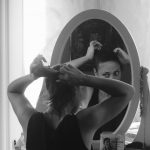The conjugation of verbs can keep Dutch language learners up at night. Why are they so important and why do people have so many problems with them? How to tackle the problem of Dutch verb conjugation?
The verb is the main part of a sentence in Dutch (and in every other language too). A sentence must have a verb to be a sentence. A sentence without a verb is not a sentence. Actually, a verb can be a sentence by itself, for example: “Sing!” “Stop!”
A verb tells a story. It tells us what has happened, what somebody did, said or thought. Verbs are also a really interesting part of a language. The most frequent ones are usually irregular and very short. The most common ones are very often just one syllable.
They are also quite tricky to learn because most of the time they change their form depending on person, tense or mode. We call this conjugation. Since we have to deal with a very large number of similar elements it’s really hard to use them fluently without making mistakes. Let’s be clear, the traditional approach to learning a language fails particularly badly when it comes to verb conjugation.
In the following article, you will find a lot of information about verb conjugation. We go through the rules, patterns and examples to give you a feeling of the size of the beast. The good news is that you don’t have to remember all that – you shouldn’t even try. There is a better way to do this.
At the end of the article we talk about the method that has allowed thousands of language learners to tackle the problem of verb conjugation in their target language. For many people conjugation is a question of success or failure in their language learning journey.
What is conjugation?
To begin with, it is useful to know what conjugation means.
Conjugation is the variation of a verb through modes, tenses, persons, numbers, sides and other grammatical categories. In Dutch, many verbs are conjugated regularly. That is, by using certain rules and by adding the correct ending, we get the correct form of the verb. However, there are (unfortunately) some verbs that do not follow any rule – these are irregular verbs.
In this article, I will introduce you to both types and show you how we should use them. Finally, I will tell you why you shouldn’t really care that much whether a verb is regular or irregular.
Dutch irregular verbs
Initially, irregular verbs were the standard. In other words, verb forms were considered ‘regular’ when they exhibited irregularity. This phenomenon is indicative of the natural evolution of languages, which occurs primarily through random, independent processes. The irregularity of verb forms highlights this randomness.
As time has passed, languages have continued to evolve. Frequently used verbs, such as “hebben,” “zijn,” or “komen,” have maintained their highly irregular conjugation patterns, whereas less commonly used verbs, like “werken” or “luisteren,” have seen changes in their conjugation patterns.
The two most common irregular verbs are “hebben” and “zijn”. You can find more information in our article on Dutch irregular verbs.
Verb “zijn”
| Subject | Present | Past | Perfect |
|---|---|---|---|
| Ik | ben | was | ben geweest |
| je/jij/u | bent | was | bent geweest |
| hij/zij/het | is | was | is geweest |
| wij/we | zijn | waren | zijn geweest |
| jullie | zijn | waren | zijn geweest |
| zij/ze | zijn | waren | zijn geweest |
Verb “hebben”
| Subject | Present | Past | Perfect |
|---|---|---|---|
| Ik | heb | had | heb gehad |
| je/jij/u | hebt | had | hebt gehad |
| hij/zij/het | heeft | had | heeft gehad |
| wij/we | hebben | hadden | hebben gehad |
| jullie | hebben | hadden | hebben gehad |
| zij/ze | hebben | hadden | hebben gehad |
Dutch regular verbs
Regular verbs make up a large proportion of verbs in Dutch. We use certain rules and principles to conjugate regular verbs in Dutch. To do this, you first need to find the verb stem, and then add the appropriate ending according to the applicable rule
Present tense
In the present tense (onvoltooid tegenwoordige tijd), we conjugate regular verbs by adding “t” to the stem in the 2nd and 3rd person singular.
| Subject | Form | Example |
|---|---|---|
| ik (I) | stem | Ik werk. |
| je/jij (you) | stem + t | Je werkt. |
| hij/zij/het (he/she/it) | stem + t | Hij werkt. |
| we/wij (we) | infinitive | We werken. |
| jullie (you) | infinitive | Jullie werken |
| ze/zij (they) | infinitive | Ze werken. |
Past tense
In the past tense (onvoltooid verleden), we add the ending “te” or “de” (“ten” or “den” in the plural) to the stem. The choice of “te” or “de” depends on the last vowel in the stem: if it is voiceless (e.g. in “werk“) we add “te”, and if it is voiced (e.g. in “hoor“) we add “de”. This is known as the “soft ketchup” rule.
Look at the examples:
| Subject | Form | Example |
|---|---|---|
| ik (I) | stem + te/de | * Ik werkte. * Ik hoorde. |
| je/jij/u (you) | stem + te/de | * Je werkte. * Je hoorde. |
| hij/zij/het (he/she/it) | stem + te/de | * Hij werkte. * Hij hoorde. |
| we/wij (we) | stem + ten/den | * We werkten. * We hoorden. |
| jullie (you) | stem + ten/den | * Jullie werkten. * Jullie hoorden. |
| ze/zij (they) | stem + ten/den | * Ze werkten. * Ze hoorden. |
The best way to learn Dutch verb conjugation
It doesn’t matter whether a verb is regular or not. In order to be able to use it fluently in conversation, we need to practise its use many times before it becomes a reflex. I would even dare to say that regular verbs are a kind of trap, because we think, because there is a simple rule describing their conjugation, that by knowing this rule, we will simply be able to use this verb in conversation. Nothing could be further from the truth. Experience shows that trying to speak only on the basis of the learned rules goes very slowly.
Note that we usually learn the conjugation of a verb in the affirmative form in order:
- I
- You
- He/she
- We
- You
- They
All we have to do is to say a question or a negative in the third person or in the plural and our speech usually starts to lose its fluency. Our brain needs time to process information. We basically go through all these forms in our mind in the order we learned them and then try to make a question or a negative out of it. It’s a whole bunch of calculations that our brain has to do in order to even start putting a sentence together.
I mentioned that regular verbs can be a trap because in practice it means that we don’t practise them often enough, counting on the fact that during a conversation we conjugate the verb according to the mentioned rule.
This is a fundamental mistake. The rules describing the conjugation of regular verbs are, of course, useful for memorising particular verb forms. However, in order to be able to use a verb fluently in a sentence, we simply have to practise it a lot.
The best way to practise reflexive use of verbs is to memorise example sentences. This is an unbelievably effective exercise, which has many additional benefits over and above those described above. Read more about it in out article “The best way to learn a language is through sentences“.
Firstly: we remember the whole phrase ready to use. Secondly: We memorise the way the verb and the complement are combined. So we memorise and practise the whole sentence structure. In practice, this means that we will be able to build sentences fluently.
Note that this is a fundamental change in the approach to language learning. Instead of memorising individual words and hoping that you will, by some miracle, be able to combine them fluently into sentences, it is much better to simply memorise and repeat entire sentences using Spaced Repetition algorithm.
The verb, or judgment, is the key part of a sentence, which governs the whole sentence and gives it meaning. Therefore, it is crucial to memorise and practise it using whole sentences as examples.
Finally remember that learning vocabulary is as important as learning grammar. We write about it in the article “How to Expand Your Vocabulary in Dutch language“







